Are Shower Heads Universal? Mostly, But...
Author: Omar Alonso | Editor: Omar Alonso
Review & Research: Jen Worst & Chris Miller
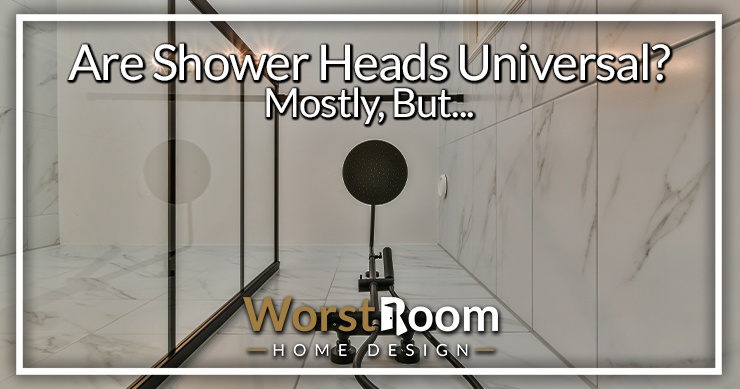
Do you dream of installing one of those rain shower heads in your bathroom? You’re probably wondering if it will fit your existing shower arm. Are shower heads universal? And what’s a shower arm? It’s the plumbing extension from the wall connecting to the shower head.
Fortunately, we have good news for you. Most shower heads in American and Canadian homes have a universal thread size of 1/2-inch “NPT.” So, you can purchase any locally-sold shower head and install it in your shower with no issues.
There are exceptions to this rule for shower heads sold in other countries, shower head arms in old homes, or unconventional shower head designs. So, there’s more to selecting a shower head than you expect.
We curated these tips to ensure you don’t waste money on the wrong shower head or find yourself returning it to the vendor. Do all shower heads fit universally? Let me tell you all about it.
Do All Shower Heads Offer Universal Fitment?
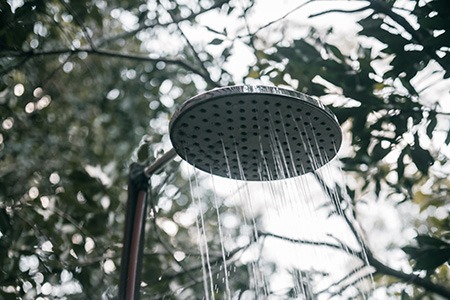
If you live in the United States or Canada and buy your new shower head from a local supplier, you shouldn’t have a problem installing it in your shower. Local manufacturing brands use a ½-inch NPT design, offering a somewhat universal fitment to most pipework in these countries, no matter the types of shower faucets used.
However, it’s important to note there are exceptions to the rule. Let’s unpack what you need to know about pipework and shower head fittings before you check out online with your new model.
NPT Vs. BSP Shower Heads
If you’re looking online for your new shower head and find the perfect design, ensure you review the specifications. America and Canada use the spec “1/2-inch NPT.” NPT is an acronym for “National Pipe Thread Tapered.”
If you’re looking at a shower head from a European, Asian, or African supplier, it most likely comes with the “1/2-inch BSP” standard shower head thread size, which stands for “British Standard Pipe.” This manufacturing standard exists in Australia, New Zealand, Asia, Europe, and South Africa.
So, the pipework standard is similar in all countries, at a 1/2-inch standard shower head pipe size. However, there’s a difference in the type of thread used. If you try to insert a BSP part into an NPT fitting, you’re not going to be able to get the thread to take, or you’re going to strip it.
You're probably wondering who had the authority to create these standards. It was a combined effort between the American Society of Mechanical Engineers (ASME) and the American National Standards Institute (ANSI), laid out in their standard B1.20.1 (no longer online).
Uncommon & Unique Shower Head Designs
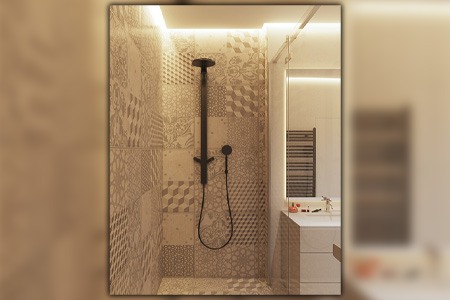
You’ll need to avoid unconventional shower head designs and sizes when choosing a new model. Unless you want to spend more money remodeling your pipework, it’s best to stick to the hardware you have in your home.
For instance, the rainfall shower head is a popular design. Can you imagine the amazing feeling of being rained on in the shower each morning? Sounds exhilarating, right? However, these models usually connect to a fitting in the ceiling.
The rainfall shower head might be too big for the fitting if you have an existing shower arm coming from the vertical wall. They may not be mounted at the standard shower head height, either. The pipe threading might be the right cut, but the head may require a longer shower arm to extend away from the wall to the center of the shower stall.
Shower Heads in Older Properties
The current homebuilding standard for plumbing fittings in homes is the ½-inch NPT size and thread. However, that hasn’t always been the case. In the past, homebuilders would use different pipework and plumbing standard that won’t accommodate the modern ½-inch NPT standard.
If you live in an older home, you’ll need to replace the shower arm or locate an adapter for the shower head. The only alternative is to rip out and replace the old plumbing, which is expensive.
The “ball end” shower arm is a common problem with older homes. This design was only available through a few companies, such as Gerber Ball, American Standard, and Price Pfister. You might not find any adapters in stores since this fitting is so old and long out of production.
Hopefully, you won’t experience these pitfalls when choosing your new shower head. However, we curated this step-by-step guide to help you assess the compatibility of your new shower head with your existing pipework.
A Step-by-Step Guide to Checking Shower Head Compatibility
This quick guide gives you everything you need to know when checking shower head compatibility. Are shower heads universal? Let's find out. Follow the steps to success, and you'll be showering in style in no time!
Step 1 – Measure the Shower Arm
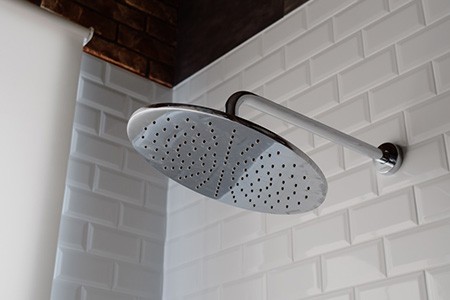
If you live far away from a plumbing store and order your shower head online, double-check the threads on your shower arm before placing your order for your new shower head. Does your shower head have female or male threads, and what's the difference between them?
Look at the shower arm. Are the threads on the outside or inside of your fitting? If they're on the interior of the fitting, it's a female thread, and vice versa. A male and female thread connect. So, you can't fit a shower head with a female thread to a shower arm with the same.
Typically, the shower arm will have male threads, and the shower head will have female threads. If you buy a shower head with male threads and your shower arm has the same, you'll need to purchase an adapter to solve the problem.
Next, you'll need to check to see if you're dealing with parallel or tapered threads. A tapered thread increases the diameter along the threads, while parallel threads remain consistent along the fitting length. You can eyeball it to get an idea of which type you have.
If you're in America or Canada, it's usually a tapered thread. However, you'll need to double-check and ensure your connecting part corresponds. A tapered male fitting connects to a tapered female part.
Step 2 – Measure the Inner Diameter & Outer Diameter
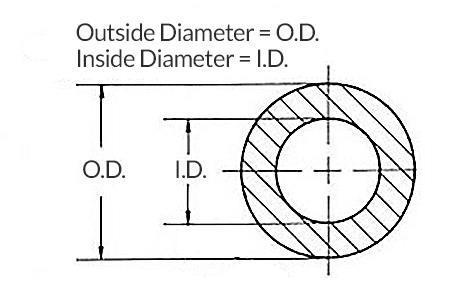
Next, measure the diameter of the fitting. If you have male shower head threads, measure the outside diameter (OD). If you have a female thread, measure the inside diameter (ID). You'll need to compare the measurement to a thread chart to determine the "trade" or "nominal" size.
This nominal size, also known as the "trade size," is a standard identifying name to accurately identify fittings. These are key measurements to note when shopping for your shower head. If you're feeling confused, visit a plumbing store near you and ask for assistance. The threading will be standardized though, so don't worry too much.
Step 3 – Take Your Shower Head to a Plumbing or DIY Store
Most people without experience with plumbing or pipework will stare at the shower arm and have no idea if it’s a standard size. If that’s the case for you, remove it and take it to a plumbing store. Trust us. You’re going to save yourself a lot of time and hassle.
If you don’t have your current shower head available, remove the shower arm and take it to the professionals. Using this method, you get the assistance you need to see if it’s compatible before making the trip home to try to insert it into the shower arm.
Step 4 – Ask an Expert or Knowledgeable Friend
If you have a friend or neighbor that’s a handyman or plumber, ask them for advice on the right shower head for your system. Not everyone has access to these geniuses, but it’s worth asking around on social media.
If you find someone who knows what they’re doing, send them some pics of your shower head and arm. Most people will be happy to help you out. An experienced plumber or handyman will know what you need by looking at the photos.
Step 5 – Experiment with Different Shower Heads
If you don't have access to the above resources, then your only option is to purchase the shower head and try it out. Fortunately, we live in the era of eCommerce, and it's easy to return anything you buy online. You'll get to experience all types of showers by swapping out the heads, too.
However, if you can avoid the hassle of returning something to a sender and waiting for a refund, it's so much better. Order a few items online to avoid wasting time and see which fits. Send the rest back and request your refund. Are all shower heads the same size? You'll find out soon!
Fitting the Shower Head – Supplies & Resources
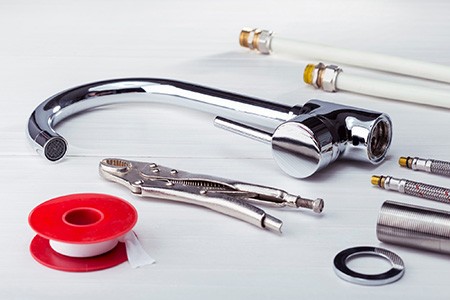
The job isn't over after you settle on your new shower head. You're going to need some basic plumbing supplies to finish installing it. Make sure you have an adjustable pipe wrench to remove the old shower head and install your new one.
You'll also need a rag to pad the wrench's jaws and prevent scratching the steel or chrome. You'll also need to order a roll of Teflon plumber tape to ensure a tight fit to the shower arm. If you don't use the tape, the fitting will leak.
FAQ's About Changing Shower Heads
There's a couple of questions that always come up during these discussions, so lets provide the answers for everyone real quick. Keep in mind that you may not need to swap out to a new shower head. You may simply need to clean the old one. You can clean a shower head without vinegar or other harsh chemicals. It's worth a try.
Do I Need to Turn Off the Water Mains to Install a New Shower Head?

No, you don't have to turn off the main's water supply to remove and fit your new shower head. The taps in the shower control the flow of water to the shower head. Make sure they're closed properly before starting the job, and you won't have any problems.
Can I Change My Shower Head in My Rental Property?
Most landlords won't care if you change the shower head in your rental unit. However, it's a good idea to give them the courtesy of asking for permission before you start messing around with the plumbing. Keep the original one and put it back on when you move out.
Some HOA agreements may stipulate that you must hire a professional plumber to complete the task, even though it's a simple fix. They do this to cover themselves for insurance purposes if anything goes wrong.
So, Are Shower Heads Universal? Most of the Time
If you're in one country and not ordering a shower head from another continent, you're most likely purchasing a modern and standardized replacement. In most (almost all) cases, you'll have no problems. But if your shower arm is so old it has non-standard threads, then you'll need an adapter. So, are shower heads universal? In most modern cases, yes, they are.



